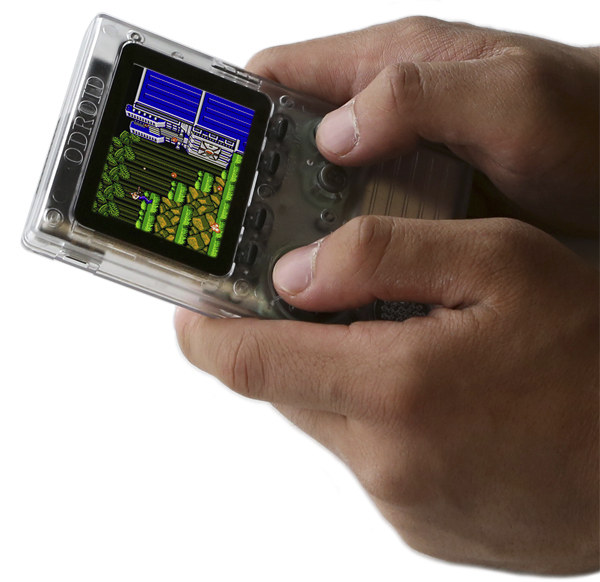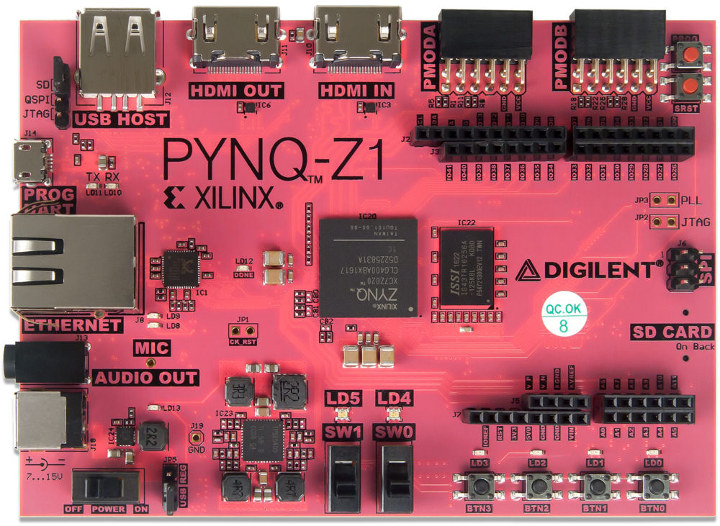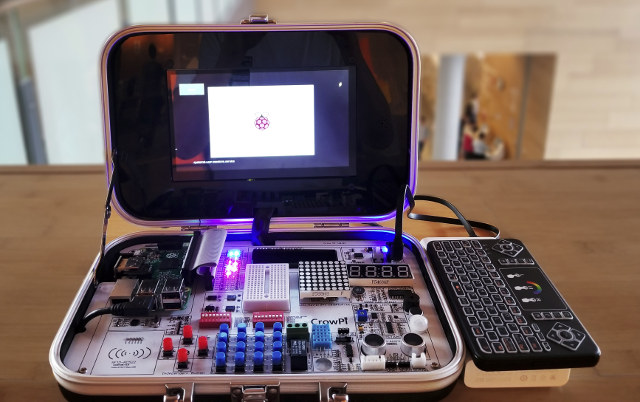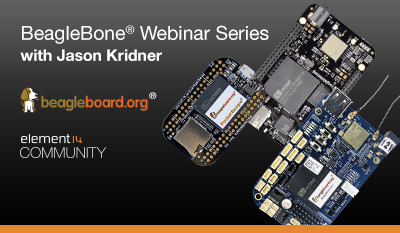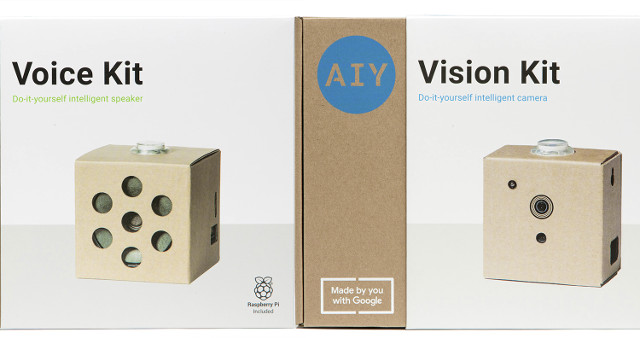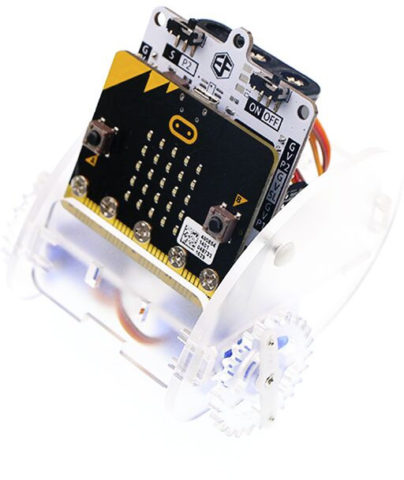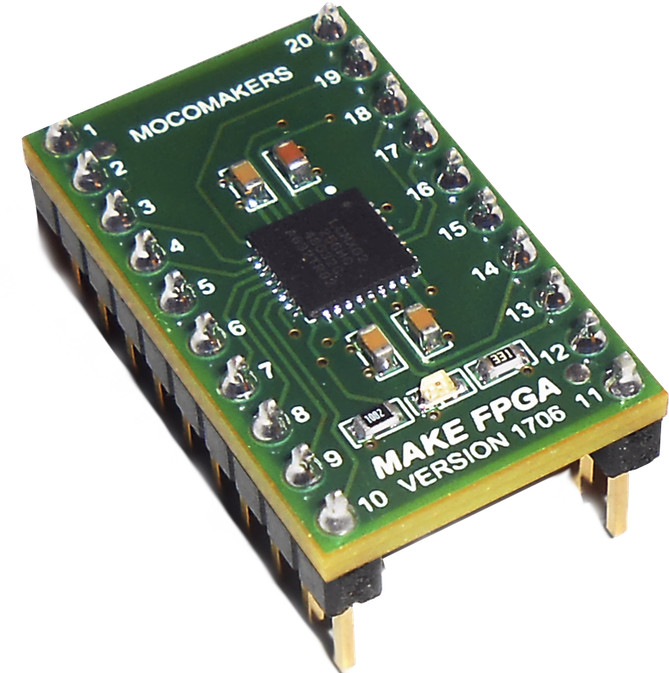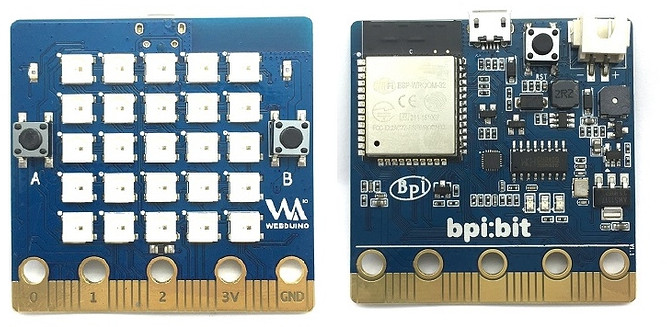When I first saw Hardkernel made ODROID-GO portable gaming console, I immediately thought they did a Linux device ala PocketCHIP, since so far the company has only designed Android & Linux development board. But ODROID-GO game console is actually based on Espressif ESP32 WiSoC, programmable with the Arduino IDE, and launched to celebrate Hardkernel’s 10-year anniversary. ODROID-GO specifications: SoC – Custom ESP32-WROVER module with ESP32 SoC @ up to 240 MHz, 16 MB Flash, and 4MP PSRAM Storage – micro SD card slot connected via SPI Display – 2.4″ 320×240 TFT LCD (SPI) Connectivity – WiFi 802.11 b/g/n 2.4GHz – 2.5GHz, Bluetooth 4.2 BR/EDR, BLE Speaker – 0.5Watt 8Ω Mono USB – 1x micro USB port for charging (500mA) and USB-UART communication Expansion Port – 10-pin header with I2C, GPIO, IRQ at 3.3Volt Misc – Buttons: Menu, Volume, Select, Start, A, B, Direction Pad Battery – 3.7V/1,200mAh Li-Polymer good for […]
Xilinx Zynq-7020 based PYNQ-Z1 Arm + FPGA Board is Meant to be Programmed with Python
Xilinx Zynq-7000 series is a family of SoC based on Arm Cortex A9 processor coupled with FPGA fabric, and since the introduction in 2012, we’ve seen may board based on the entry-level Zynq-7010 or Zynq-7020 SoCs. Digilent PYNQ-Z1 is another Xilinx Zynq board from the company, but it does not differentiate itself by its hardware features, and instead the software part is the most interesting. The board is designed to be used with PYNQ, a new open-source framework that enables embedded programmers to exploit the capabilities of Xilinx Zynq SoCs without having to design programmable logic circuits, relying instead on Python programming. Digilent PYNQ-Z1 hardware specifications: SoC – Xilinx Zynq-7020 (XC7Z020-1CLG400C) dual core Arm Cortex-A9 processor with FPGA with 1.3 M reconfigurable gates System Memory – 512MB DDR3 Storage – Micro SD card slot, 16MB QSPI Flash with factory programmed globally unique identifier (48-bit EUI-48/64 compatible). Video – HDMI In […]
CrowPi is a Portable Learning Kit for Raspberry Pi 3 B+ / Zero Boards (Crowdfunding)
We have an embarrassment of choices for Raspberry Pi accessories from touchscreen displays, HAT add-ons boards, sensors, breadboard, and so on, as well as good software and support from Raspberry Pi forums. This is all good, but it can be messy with all those jumper cables, and not really portable. Elecrow has a neat solution with the CrowPi learning kit for Raspberry Pi 3 and Raspberry Pi Zero that come with a 7″ display, several sensors, buttons, a breadboard, and more all packed in a small suitcase. Main parts of the kit: 7″ touchscreen display Breadboard with GPIOs status LEDs Input modules – Light sensor, IR receiver, PIR motion sensor, sound sensor, temperature & humidity sensor, touch sensor, ultrasonic sensor, NFC reader, and tilt sensor Output modules – 8×8 LED matrix, 4-digit LED display, I2C LCD1602 display, buzzer, vibration motor, relay module, 9G servo, and stepper motor. Control modules – […]
A 6-Part BeagleBone Webinar for Users, Developers and Education Starts on May 10
The BeagleBone Black and derivatives like PocketBeagle or BeagleBone Green Wireless are still popular development boards, and if you are interested in the platform as a developer, user, or educator, you may learn more about the boards and how to use them in an upcoming BeagleBone webinar series presented by Jason Kridner, the co-founder and board member at BeagleBoard.org Foundation, and element14. The webinar series will start in about 2 weeks with the following schedule: Introduction to BeagleBone – 10th May 2018 @ 11:00 AM (CDT)/17:00 (GMT) BeagleBone for Linux Users – 24th May 2018 @ 11:00 AM (CDT)/17:00 (GMT) BeagleBone for Embedded Developers – 6th June 2018 @ 11:00 AM (CDT)/17:00 (GMT) BeagleBone for Web Developers – 21th June 2018 @ 11:00 AM (CDT)/17:00 (GMT) BeagleBone Blue for Robotics – 12th July 2018 @ 11:00 AM (CDT)/17:00 (GMT) BeagleBone in the Classroom – 26th July 2018 @ 11:00 AM […]
Google AIY Projects Kits are Easier to Use in 2018 with Raspberry Pi Zero WH and All Accessories Included
Google launched two AIY Projects kits last year with a Voice Kit that took a Raspberry Pi 3 to create a smart speaker, and a Vision kit for hardware accelerated computer vision using a Raspberry Pi Zero W board. Google reports the kits are popular, especially for STEM education, but educators/parents had to buy the Raspberry Pi boards and micro SD cards themselves, as well as flash the firmware to the cards. So the company decided to redesign both kits to work with the Raspberry Pi Zero WH (RPi Zero W with headers), and include it inside the box with cable and pre-provisioned SD card, so kids can get started faster with experimentation with having to setup the kits. So that means we now have AIY Projects Voice Kit v2 with RPi Zero WH and micro SD card with firmware, as well as AIY Projects Vision Kit v1.1 with RPi Zero […]
Ring:bit Car is a $20 Robot Kit for BBC Micro:bit
Elecfreaks has launched a robot kit designed for BBC Micro:bit that comprised of a chassis, and Ring:bit board with 3 channels of GPIO, among which 2 channels are used for driving servos. The kit can be used to teach children to control a mini car using Microsoft MakeCode visual programming editor. Ring:bit board specifications: Supports up to 3 servos with up to 2x external line detection modules when being shifted to P2. Misc – Power switch, function selection Power Supply 3x AAA batteries. Input Voltage – 3.9V-4.5V DC Dimension – 65.00 x 51.70 mm Weight – 27 grams The rest of the kit includes plastic parts for the chassis, two plastic gears, two servos, as well as screws for assembly. Documentation is somewhat limited, but you’ll find a user guide at the bottom of Ring:bit board product page, and the company points to a tutorial on Tinkercademy. As mentioned […]
Fipsy is a $10 Breadboard-Friendly FPGA Board for Education (Crowdfunding)
We’ve already seen several cheap FPGA boards in the past with the $25 miniSpartan3 (Xilinx), $34 Spartixed (Xilinx), or 40 Euros Olimex iCE40HX8K-EVB boards (Lattice), but if you have a really tight budget you can now plat with FPGA for just $10 thanks to Fipsy board. With its 256 LUTs Lattice Semi MachXO2 FPGA, you’ll be limited to what you can do for specific projects, but it could be useful to teach yourself or students FPGA programming, especially it also happens to be breadboard-friendly. Fipsy specifications: FPGA – Lattice Semiconductors MachXO2 (LCMXO2-256HC-4SG32C) FPGA @ 269 MHz max. with 256 LUTs, 2 kbit Distributed RAM, 32 LABs (Logic Array Blocks) Programmable by SPI and I2C Expansion – 2x 10-pin header supporting various interfaces including: LVCMOS 3.3/2.5/1.8/1.5/1.2 LVTTL LVDS Bus-LVDS MLVDS RSDS LVPECL SSTL 25/18 HSTL 18 Schmitt trigger inputs, up to 0.5 V hysteresis Misc – Onboard LED Operating Supply Voltage – 3.3 […]
$19.50 BPI:bit ESP32 Board is Inspired by BBC Micro:bit, Compatible with Webduino and Arduino IDE
BBC micro:bit board for education was first unveiled in 2015, before starting to be given away to UK students, and later sold for about $19 in 2016. The board supports Bluetooth connectivity, includes an array of 25 LEDs, as well as a specific 20-pin edge connector also featuring 5 large holes (rings) for 3 I/Os and power. So far I had not seen any clones or alternative boards inspired from the design, as we see for Arduino or Raspberry Pi boards. But SinoVoIP (Banana Pi) has changed that with their BPI:bit clearly inspired from the Micro:bit, but offering both WiFi and Bluetooth connectivity via an ESP32 module. Hardware specifications: Wireless module – ESP-WROOM-32 module with WiFi and Bluetooth LE connectivity LEDs – 25x RGB LED array Sensors – 2x light sensors, thermistor, 9-axis accelerometer / gyroscope / compass (MPU-9250) Expansion – 3 digital/analog I/O rings, 3V/GND ring, 20-pin edge connector […]


